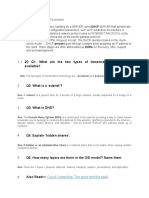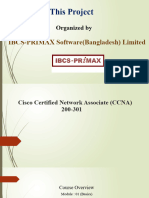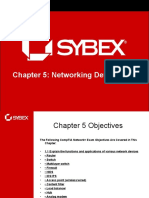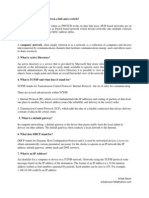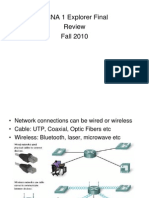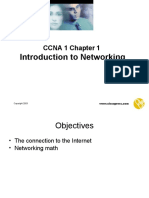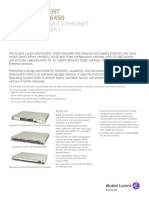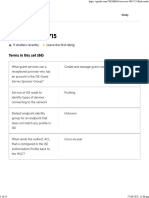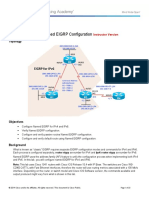0% found this document useful (0 votes)
18 views3 pagesNetworking Interview QA
The document is a comprehensive quiz covering computer networking concepts from basic to advanced levels. It includes questions on TCP vs. UDP, the OSI model, IP and MAC addresses, DNS, network devices, troubleshooting scenarios, advanced topics like BGP and NAT, and tools like ping and Wireshark. Each question is accompanied by concise answers that provide essential information about networking principles and practices.
Uploaded by
Haseeba ShaheenCopyright
© © All Rights Reserved
We take content rights seriously. If you suspect this is your content, claim it here.
Available Formats
Download as PDF, TXT or read online on Scribd
0% found this document useful (0 votes)
18 views3 pagesNetworking Interview QA
The document is a comprehensive quiz covering computer networking concepts from basic to advanced levels. It includes questions on TCP vs. UDP, the OSI model, IP and MAC addresses, DNS, network devices, troubleshooting scenarios, advanced topics like BGP and NAT, and tools like ping and Wireshark. Each question is accompanied by concise answers that provide essential information about networking principles and practices.
Uploaded by
Haseeba ShaheenCopyright
© © All Rights Reserved
We take content rights seriously. If you suspect this is your content, claim it here.
Available Formats
Download as PDF, TXT or read online on Scribd
/ 3











